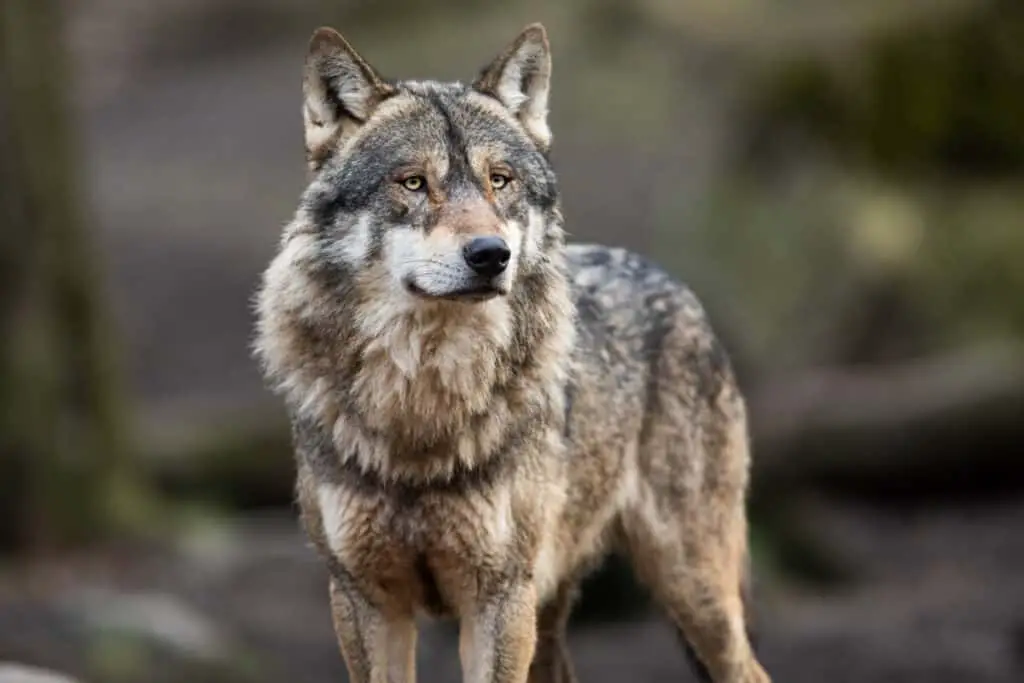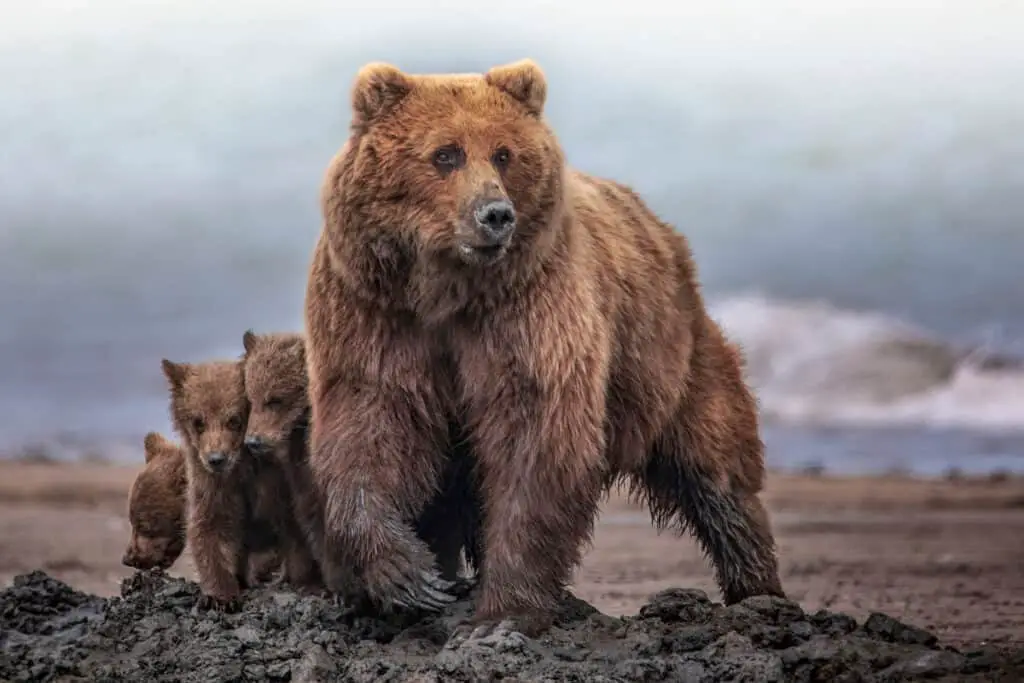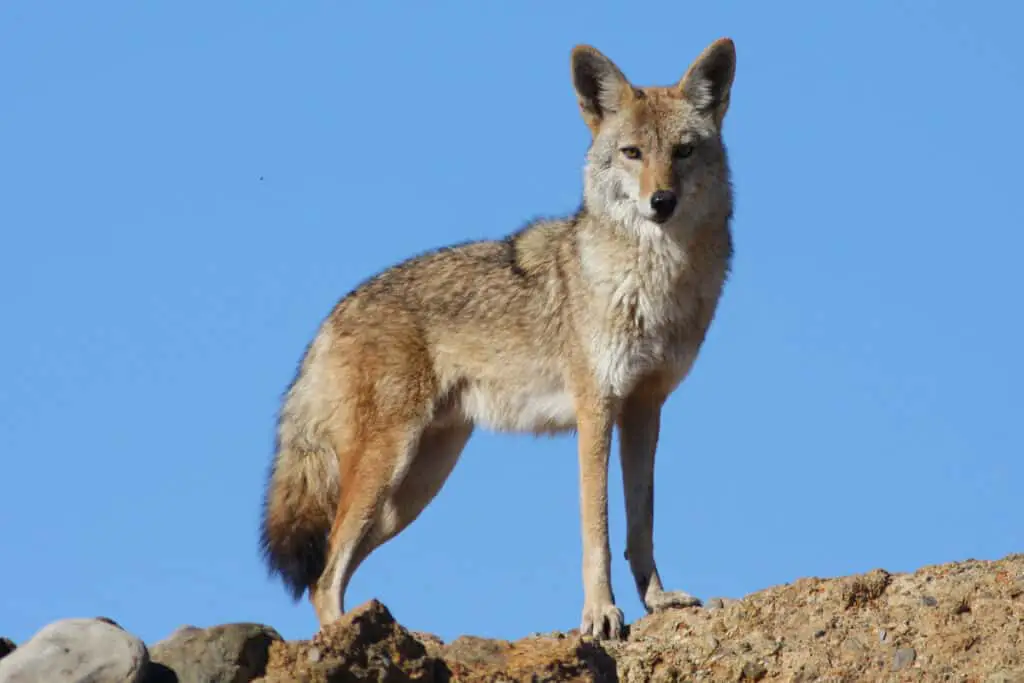The American bison is an iconic species of the North American plains. These large, shaggy beasts once roamed freely across vast expanses of grassland and prairie, numbering in the millions. Today, however, they are confined to protected areas and private ranches due to habitat loss and hunting pressures.
Despite their formidable size and strength, bison have a number of natural predators that pose a threat to their survival. One of the most significant predators of bison is the gray wolf (Canis lupus). Wolves were once widespread throughout much of North America but were hunted nearly to extinction by humans in the early 20th century.
Since then, conservation efforts have helped these apex predators recover in some regions, leading to increased predation on large herbivores such as elk, deer, and bison. Other potential predators include mountain lions (Puma concolor), black bears (Ursus americanus), coyotes (Canis latrans), and grizzly bears (Ursus arctos horribilis).
Understanding the dynamics between bison and these predators can provide valuable insights into how ecosystems function and help inform conservation efforts aimed at preserving this iconic species for future generations.

The Gray Wolf
The gray wolf is a remarkable predator known for its hunting prowess. The species has historically hunted large ungulates such as bison in North America.
Factors affecting the gray wolf’s ability to hunt bison include pack size, age structure of prey populations and habitat characteristics.
Ethical considerations play an important role in managing interactions between wolves and bison populations. Wolves have been heavily persecuted throughout history due to their perceived threat to livestock and human safety.
However, reintroduction programs aimed at restoring wolf populations have triggered conflicts with ranchers and hunters who view the predators as competitors for resources. As a result, it is crucial that wildlife managers carefully consider the impact of their actions on both wolf and bison populations while ensuring public safety.

Mountain Lions
Apart from the well-known predators such as wolves, coyotes, and humans, mountain lions also pose a significant threat to bison.
Mountain lions use stealthy hunting tactics, which involve stalking their prey before attacking them with deadly force. Mountain lions have been observed preying on calves and weaker individuals of the bison herd.
To survive in areas where these predators exist, bison have adapted their behavior by forming tighter herds that provide safety in numbers. Moreover, they tend to graze during daylight hours when visibility is better to detect any approaching threats.

Coyotes
Coyotes have been observed preying on both adult and juvenile buffalos, especially when they are separated from their herd or weakened by injury or illness.
The behavior of coyotes towards bison herds is complex and varies depending on various factors such as season, food availability, and population density. In some cases, coyotes may actively target healthy calves or young adults in an attempt to thin out the herd’s overall numbers. Conversely, in other situations where food is scarce, coyotes may avoid attacking herds altogether as it could lead to competition with other carnivores for limited resources.
Understanding these dynamics can help researchers better manage populations of both species while minimizing conflicts between them.
- Factors that influence coyote predation on bison herds:
- Season
- Food availability
- Ways to minimize conflicts between coyotes and bison herds:
- Implementing non-lethal deterrents like fencing or guard animals
- Conducting targeted removal of problem individuals rather than indiscriminate killing
- Educating ranchers and landowners on the benefits of coexistence and the importance of maintaining healthy ecosystems.

Grizzly Bears
The grizzly bear is a formidable predator that can take down large prey such as bison. Grizzlies are known for their aggressive behavior, especially when it comes to protecting their territory or cubs.
They have sharp claws and powerful jaws that allow them to overpower even the largest animals. When hunting, they use their sense of smell to locate prey and then stalk silently until they can make a surprise attack. This makes them well-suited to taking on bison which are strong but slow-moving.
bison migration patterns also play a role in their vulnerability to predators like grizzly bears. During certain times of the year, bison herds will migrate across vast distances in search of food and water sources.
These migrations often bring the herds into remote areas where there are fewer natural barriers against predators such as grizzlies. Additionally, during calving season, young bison calves may be separated from their mothers making them easy targets for hungry grizzlies looking for an easy meal.
Overall, while bison are incredibly resilient creatures, their predictable behavior patterns make them vulnerable to predation by apex predators like grizzly bears.
Bison Behavioral Adaptations To Avoid Predators
Bison are large herbivores that have to deal with various predators. Lions, leopards, crocodiles, and hyenas are among the most common animals that prey on buffalos. These predators often rely on their stealthy approach and teamwork in order to take down a buffalo.
Bison are aware of these hunting strategies and have developed behavioral adaptations to avoid them. One of the main ways bison avoid being hunted is through their herding behavior. Bison tend to live in large groups consisting of several hundred individuals.
This allows them to deter predators by presenting a united front. When threatened, bison will form a circle around the young or injured members of their group, making it difficult for predators to get close enough for an attack. Additionally, when one bison senses danger, they will alert others using vocalizations or body language such as head-tossing or tail-flicking.
By working together and communicating effectively within their herd, bison can reduce the chances of becoming preyed upon by predators with coordinated hunting strategies. Predators’ hunting strategies may be effective at times but bison social organization has allowed them to adapt accordingly; thus enabling their survival against predation pressure over time without compromising other aspects necessary for their ecological function.
The Role Of Predators In Ecosystems And Conservation Efforts
Predators play an essential role in maintaining ecosystem balance and biodiversity. They help regulate prey populations, preventing overgrazing or competition for resources. Additionally, predators are often indicator species that signal the health of their ecosystems.
The presence or absence of top predators can reveal human impact on a particular area. Conservation strategies have been implemented to protect predator populations and their habitats. For example, protected areas such as national parks provide safe havens for endangered carnivores like tigers and jaguars.
Other efforts include reintroducing keystone predators into areas where they were once hunted to extinction, such as wolves in Yellowstone National Park. However, conservation efforts face challenges from human activities like habitat destruction and poaching, which continue to threaten predator populations worldwide.
In conclusion, predators play a crucial role in maintaining healthy ecosystems by regulating prey populations and indicating environmental health. Despite ongoing conservation efforts, many predator species remain threatened due to human impacts on their habitats and continued poaching. Protecting these animals is not only important for preserving biodiversity but also for ensuring the sustainability of our planet’s natural systems.
Bison Importance In Indigenous Cultures And Modern Society
The role of predators in ecosystems is significant as they help maintain balance and regulate populations. Predators play an essential part in the food chain, and their presence can even affect the landscape. The absence of predators has been known to cause a population explosion among herbivores such as bison, which can lead to overgrazing and soil erosion.
Bison have long held a significant place in indigenous cultures worldwide. Many Native American tribes view these animals as sacred creatures that are integral to their rituals and traditions. In modern society, buffalo conservation efforts have become increasingly vital due to habitat destruction, poaching, and hunting. These initiatives aim to protect endangered species like the bison by providing them with a safe environment where they can thrive without fear of human intervention or natural predators.
Despite being hunted almost to extinction at one point, bison continue to captivate people’s attention due to their majestic appearance and cultural significance. Indigenous communities around the world hold bison in high esteem for their representation of strength, endurance, and determination. Conservation measures not only preserve these magnificent beasts but also prevent further damage to our planet’s ecology.
Conclusion
Bison are iconic and majestic animals that have roamed the American plains for centuries. However, they face a number of threats from predators in their natural habitats.
Gray wolves are one of the most formidable predators of bison, preying on both juveniles and adults. Mountain lions and black bears are lesser-known threats to bison while coyotes have a complex interaction with them. Despite being large and powerful animals, even adult buffalos can fall prey to grizzly bears during intense battles between these two titans.
Bison have developed behavioral adaptations such as forming protective groups to avoid predation but this does not always guarantee safety. Understanding the role of predators in ecosystems is important for conservation efforts aimed at protecting buffalo populations.
In addition to their ecological significance, bison hold great cultural importance in indigenous communities and continue to be celebrated in modern society through tourism and agriculture industries. As we strive to protect these magnificent creatures from extinction, it is crucial that we consider all factors including their interactions with predatory species in order to ensure the survival of this valuable keystone species.
